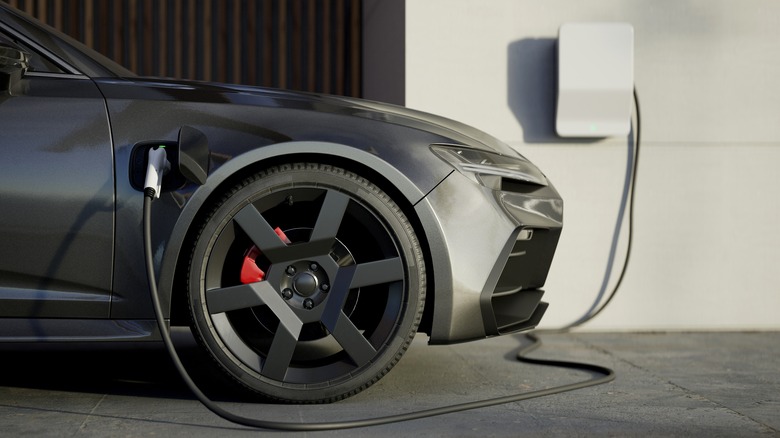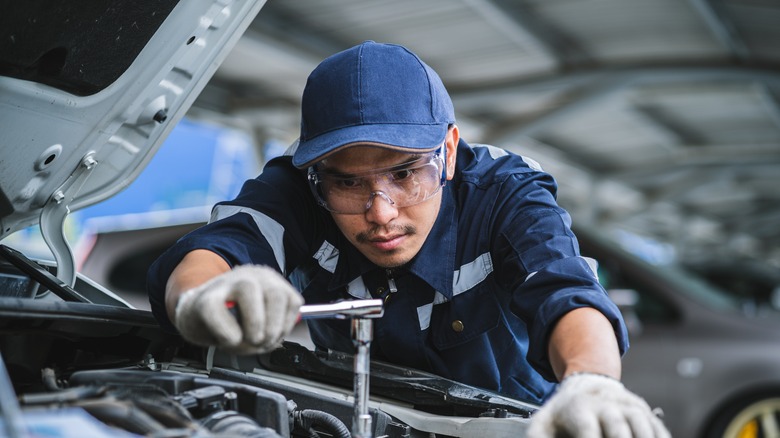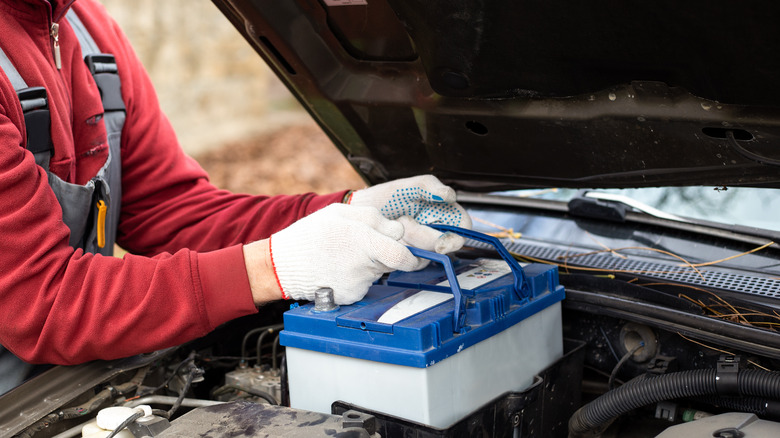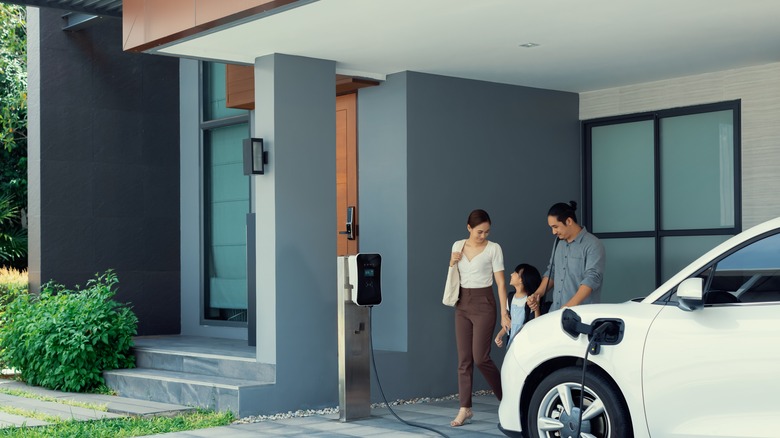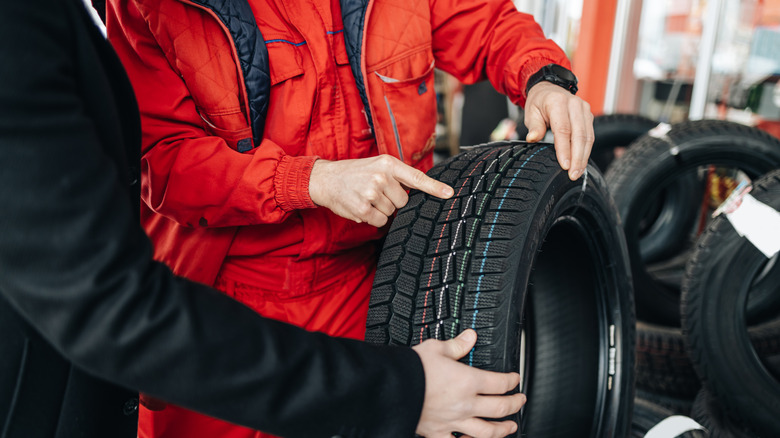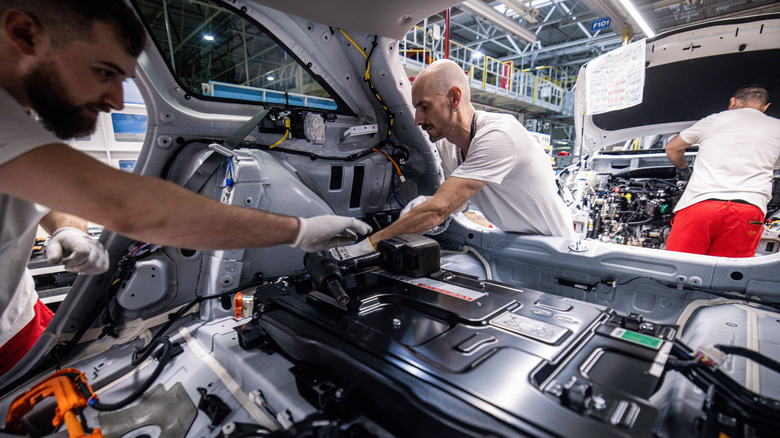5 Maintenance Tips To Get The Most Out Of Your Hybrid
With many car manufacturers going green with their engines, you've probably already done your homework on why a hybrid is the right eco-friendly vehicle for you. Known for their fuel efficiency and range flexibility, hybrid vehicles offer the convenience of gas vehicles while allowing you to reduce your carbon footprint.
Whether you're a first-time hybrid owner or a long-time fan of sustainable vehicles, maximizing its full potential is always in your best interest. However, because of its relatively complex engine system that combines both gasoline-fueled engines and electric motors, maintaining a hybrid vehicle (HV) and plug-in hybrid vehicle (PHEV) is a little different from a traditional car.
Although your hybrid may not require significantly more maintenance than a typical vehicle, hybrid owners are bound to encounter unique challenges that pure electric vehicles (EV) or traditional car owners won't understand. To prevent this, you'll need to commit to proactive maintenance and be mindful of any possible warning signs.
So, if you're serious about making sure your hybrid gets as many miles on the road as possible, here are some maintenance tips that should definitely be in your arsenal.
Routine maintenance checks
Similar to any car, your hybrid vehicle will need regular maintenance. However, you'll need to make sure that the mechanic you'll be sending it to knows how to deal with its relatively complex engine system. Because your hybrid still relies on an internal combustion engine (ICE), you'll still need to do regular and consistent oil changes.
While it used to be normal to change your oil every 3,000 miles, the American Automobile Association (AAA) claims that modern lubricants only require oil changes every 5,000 to 7,000 miles. Although if your engine runs on full-synthetic motor oils, AAA shares that it can even go as far as 15,000 miles between servicing. Maintaining proper oil levels reminds drivers you can prevent engine wear or damage that can lead to expensive repairs.
While changing your car oil yourself may be tempting, it may not always be cheaper. Not to mention, there are a lot of added consequences if you use the wrong kind of oil. If you do attempt to do it yourself for the first time, make sure to consult with professionals for advice.
Aside from this, you should also regularly check and maintain your hybrid car's other essential fluids, such as transmission fluid, brake fluid, and coolant. A general rule of thumb is that if you're unsure about the proper maintenance schedule for your particular hybrid model, you should check its accompanying owner's manual.
Dual battery care
When it comes to hybrids, you have double the amount of batteries to monitor: the high-voltage traction battery and the 12-volt lead-acid battery. While in the same system, these batteries fulfill different roles and operate at different voltage levels.
You can ensure that your batteries continue to perform as intended by avoiding corrosion, which looks like white, green, blue, or teal residue on your battery terminals. Once you find signs of corrosion, you can easily create a baking soda and water solution and scrub them manually. Afterward, it is recommended to apply petroleum jelly before re-attaching the cables to prevent it from happening again.
Additionally, extremely hot temperatures can cause thermal runaway in hybrid vehicles, wherein the battery's internal temperature cannot be regulated. At the same time, extreme cold temperatures can also decrease your hybrid battery's ability to hold charge and damage its internal components.
To avoid putting your hybrid batteries at risk of temperature-related damage, it is recommended to avoid leaving the car in direct sunlight or outside in freezing temperatures for extended periods. Aside from this, experts warn against deep discharging and depleting your hybrid car batteries, which can also affect their overall lifespan.
On the topic of battery maintenance, you should take note of the other common reasons your ICE car's battery is draining fast and watch out for software updates that could potentially include battery management improvements from your manufacturer.
Charging systems monitoring
While similar, PHEVs and HVs have differences in charging mechanisms that you'll need to consider. Unlike HVs (hybrid vehicles), which are limited to internal processes, PHEVs (plug-in hybrid vehicles) can also utilize charging stations to recharge its battery.
Unfortunately, even PHEV owners are also at the mercy of EV charging pain points, such as slow charging speeds and lack of accessibility. Aside from potentially upgrading your home charging station to a more efficient one, maintaining your PHEV also means ensuring the station you already have is working.
When inspecting your plug-in hybrid's charging system, make sure to check the cables or connectors for any sign of wear and tear or physical damage. In addition, if your charger is no longer working, have it checked by a professional.
To avoid any damage to your PHEV, you should also consider replacing it if you notice that its charging capabilities are unstable. If budget allows, you can also explore powering your battery charging system with more eco-friendly alternatives than electricity generated by fossil fuel, such as solar panels.
If you find any issues with your charging system, you'll need to send them in for repair. Thankfully, this doesn't mean you'll have to go full-on ICE since there are ways to find free EV charging stations near you. Alternatively, there are several ways to save money while charging your EV, like using EV chargers that bill per minute before an upcoming road trip.
Rotate or replace tires
According to the Department of Energy (DOE), the tires of your vehicle can directly impact your car's overall fuel economy. In fact, it even claims that 20–30% of your car's fuel consumption and 24% of its road vehicle CO2 emissions are tire-related. In addition, DOE shares that poor tread wear in your car's tires can lead to performance decreases, especially in the rain or snow.
By routinely rotating your tires, you can spread wear more evenly across all four tires. Aside from maximizing your tire's tread life, it can also reduce how fast you wear out other expensive drive components. Depending on your lifestyle, vehicle model, and tire brand, the frequency of rotating your tires will vary. Aside from expert opinion by a professional mechanic, there are guidelines you can follow to rotate your tires.
For example, Goodyear recommends four-wheel drive vehicles have their tires rotated after 4,000 miles. So, if you own a hybrid SUV, this might be a good benchmark for you. On the other hand, it recommends that cars should have their tires rotated every 6,000 miles. With this, you'll likely have more time in between tire rotations for your hybrid car.
However, it's important to gauge the best time to rotate your hybrid's tires. If you tend to drive on rough roads regularly, start to feel uneven wear, or start hearing unusual sounds, it may be worth rotating your tires a little earlier than expected.
Optimize driving habits
One underrated way to maintain your hybrid car is to be a more mindful driver. Regardless of whether you're driving a traditional gas car or a hybrid, there are many things you can do to avoid putting unnecessary strain on your car.
For example, you can be careful about carrying unnecessary weight in or on top of your vehicle. The Department of Energy (DOE) shares that an additional 100 pounds could reduce your fuel economy by 1%. Surprisingly, hauling rooftop cargo can reduce fuel economy by 10–25% when running at 65–75 mph due to drag. Carrying too much weight can add stress to your drivetrain, suspension, and brakes, per Popular Mechanics.
When possible, you should also be mindful of your air conditioning (AC) use. According to National Resources Canada, air conditioning increases your vehicle's fuel consumption by up to 20% due to its extra load on your engine. However, the actual load will vary based on things like your car's size and the temperature outside your vehicle. To reduce your AC's impact on your car, it recommends shutting it off during a cool day and keeping your windows open instead.
Lastly, while different cars will reach their optimal fuel economy at different rates, DOE cites that it usually decreases rapidly when cars hit 50 mph. To add to this, it even shares that reducing your speed by 5–10 mph can even improve fuel economy by up to 14%.
Why maintaining your hybrid matters
While hybrid cars have been around for a while, people find more reasons to buy them each year. In addition, many people still prefer hybrids instead of EVs due to reduced concerns about range anxiety.
Obviously, if you have an intense lifestyle and enjoy taking your 2023 Jeep Wrangler 4xe for a ride off-road, you should be more mindful of maintenance. Overloading an already heavy SUV can lead to higher risks of rollover, place added stress on your brakes, and cause tire blowouts. But if you're a city driver, taking care of your HV shouldn't be significantly more painful than an ordinary car.
These days, all PHEVs and some conventional hybrids sold in the United States use regenerative braking, which captures the kinetic energy into your car's batteries. While regenerative braking activation is seamless for most hybrids, the Department of Energy reminds drivers that it's not good to slam on it because it's not as reliable for emergency stops.
To get the most out of it, Top Gear recommends picking a breaking strength that suits your driving style. When you combine gradual braking practices and good driving habits, it can lead to up to 40% fuel economy improvement in stop-and-go traffic.
With electric car batteries being so expensive to replace, there's a lot of incentive for you to keep yours running for as long as possible. By following these maintenance tips, you can prevent unnecessary emergency repair costs on your hybrid.
